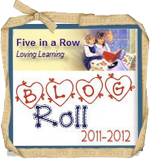Our camp this year is a nature theme and are using some wonderful books that I first found at a local nature center. Also spotted them at several booths at our homeschool convention last week-end too.
The book series we used for the first day is "Are you an Ant?" by Judy Allen and Tudor Humphries 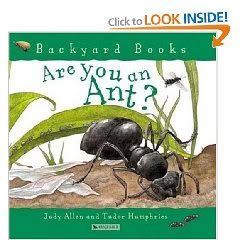
Today we started with a prayer and devotion. Then we read the story.
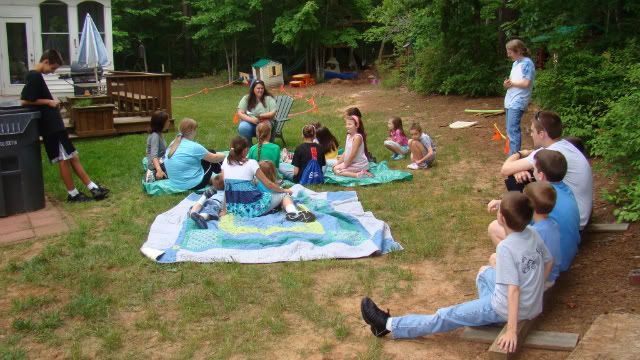
Just a close-up of our littlest camper sitting with her big sister and brother.
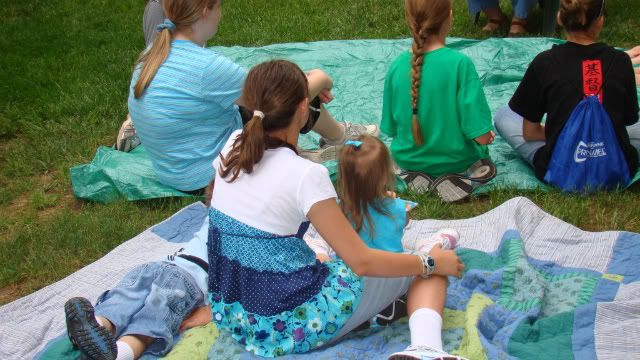
We talked briefly about how much weight an ant could lift and demonstrated this with a few of the kids - smaller children trying to lift one of the teens. Then we split into younger and older.
The younger children started by searching for ants around the yard. They looked around the flowers.
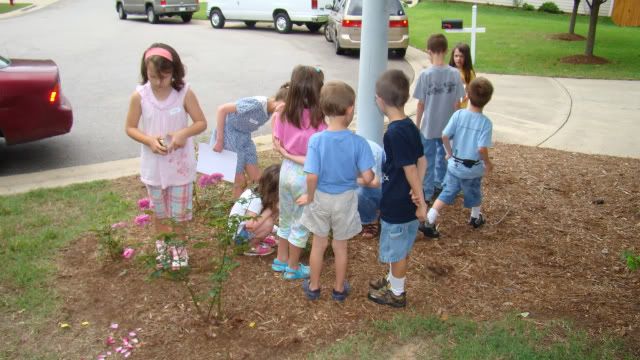
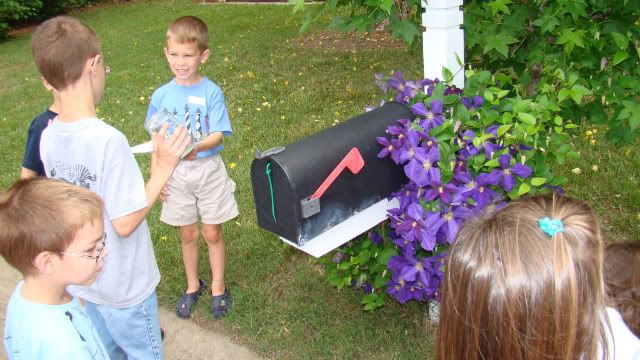
Around trees and under logs.
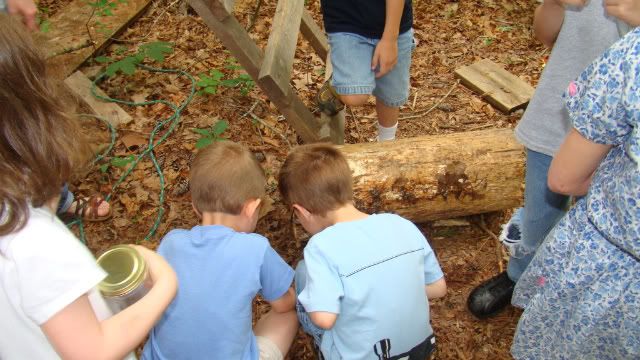
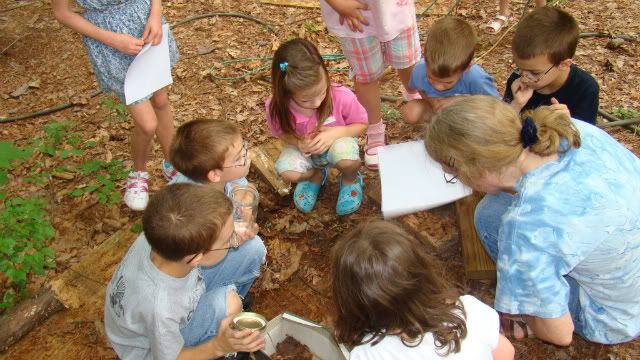
They found some ant larvae under a piece of wood in the forest!
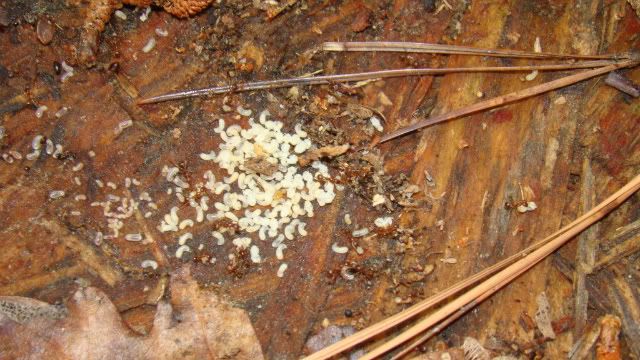
While they were looking, they collected some ants in jars to look at with a magnifying glass. We also talked a little about the ant - body type and life cycle. One of my friends bought this really neat 3D manipulative of the ant life cycle. You can find it here.
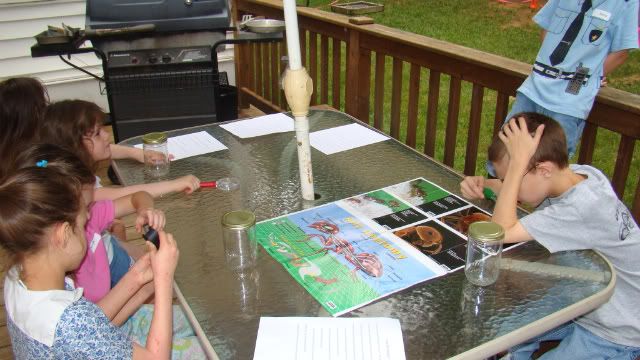
Next we did a science experiment with them to illustrate the ant's sense of smell. I had prepared 2 plates with food - one with sweet foods and the other with salty. We took these into the woods where we had seen some ants and set up the cafes.
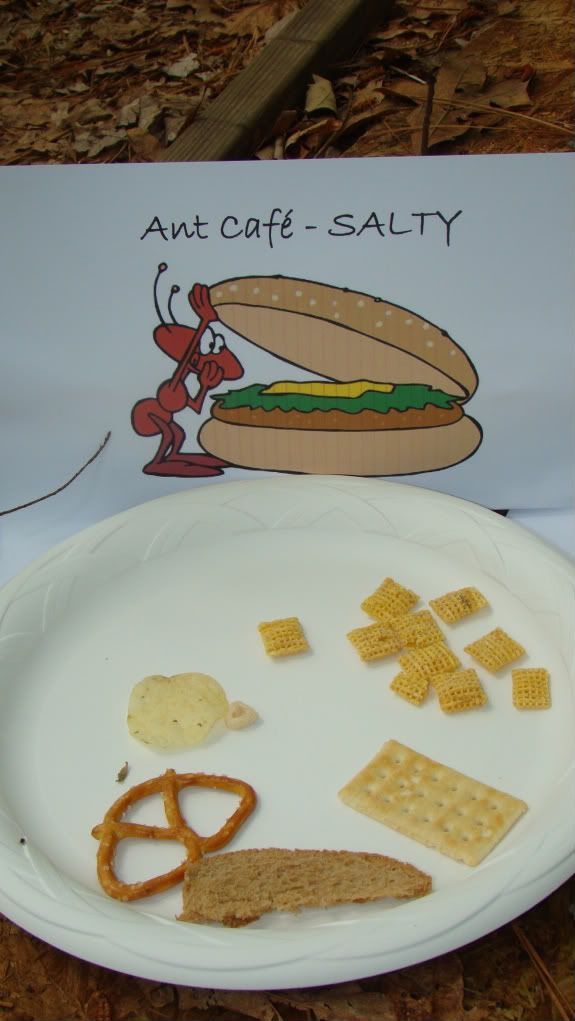
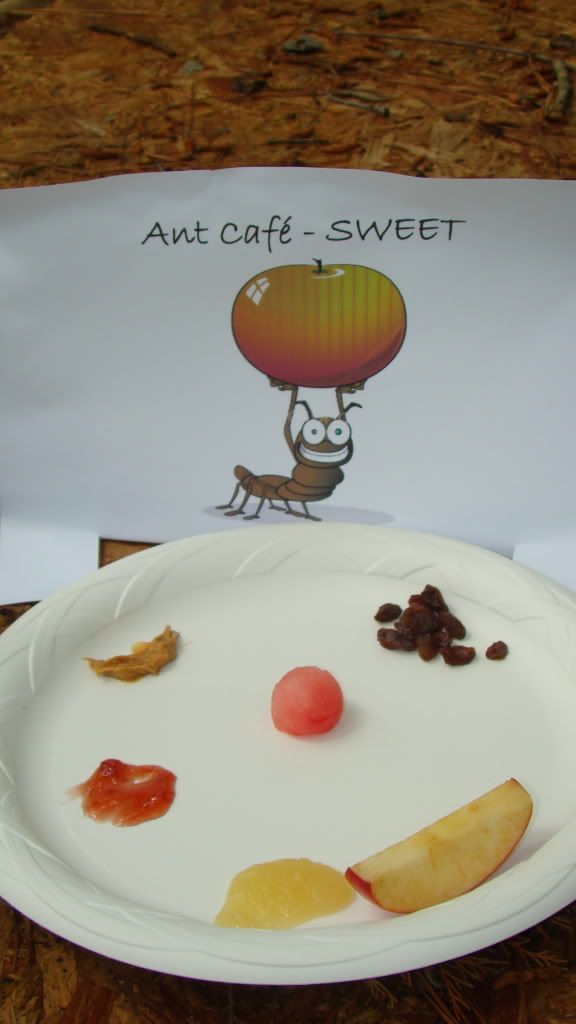
We talked some about which ones we thought would draw the ants. Most seemed to think sweet. I did too.
While we were doing this with the younger kids, the older kids were making predictions about the same food experiment.
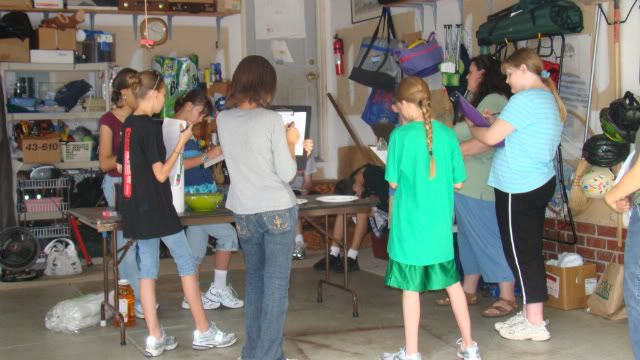
They also did more in-depth learning about types of ants in North Carolina, functions of the ant and anatomy.

Next it was time for snack. We had 3 options for the kids.
1. Ants on a log - traditional version of celery with peanut butter inside and raisin ants on top.
2. Salty version of above using pretzel rods for the log, cream cheese and sunflower seeds. (They could obviously mix and match any of these.)
3. Melon ball ants - we had coffee stirrers and watermelon and honeydew melon balls that they could skewer to make their own ant.
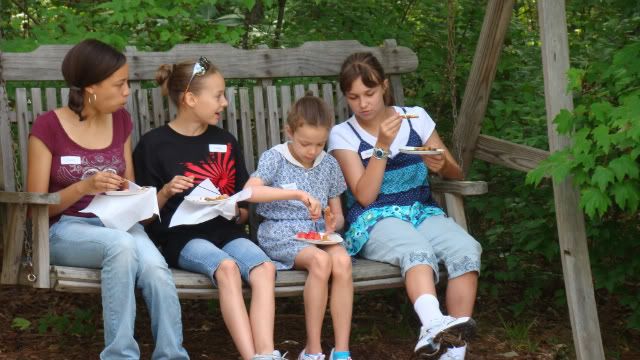
The next item was a game. This was one we just made up. We read about various things in the story and tried to think of ways that the kids could do the same actions. Here's the game - which was a big hit with all ages!
First they carried a heavy load to the colony. They could work together if the load was too heavy for one. This helped illustrated the weight that ants could carry. We used water jugs and pillowcases with sand or a sleeping bag. The children carried this down a path in the woods, through our swingset, up the ladder, down the slide and then into the colony.
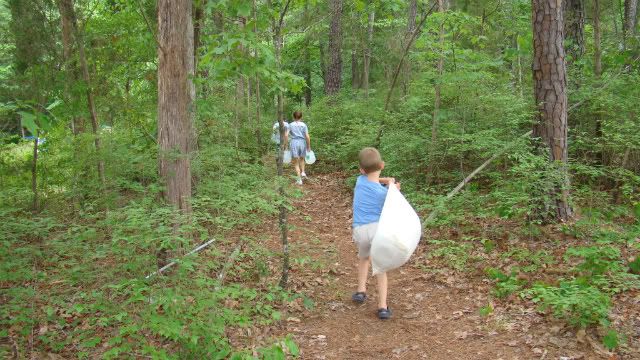
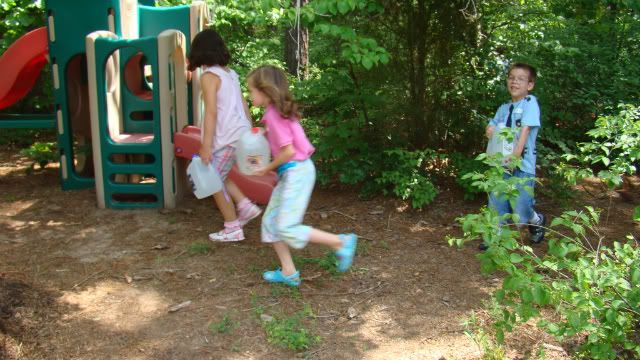
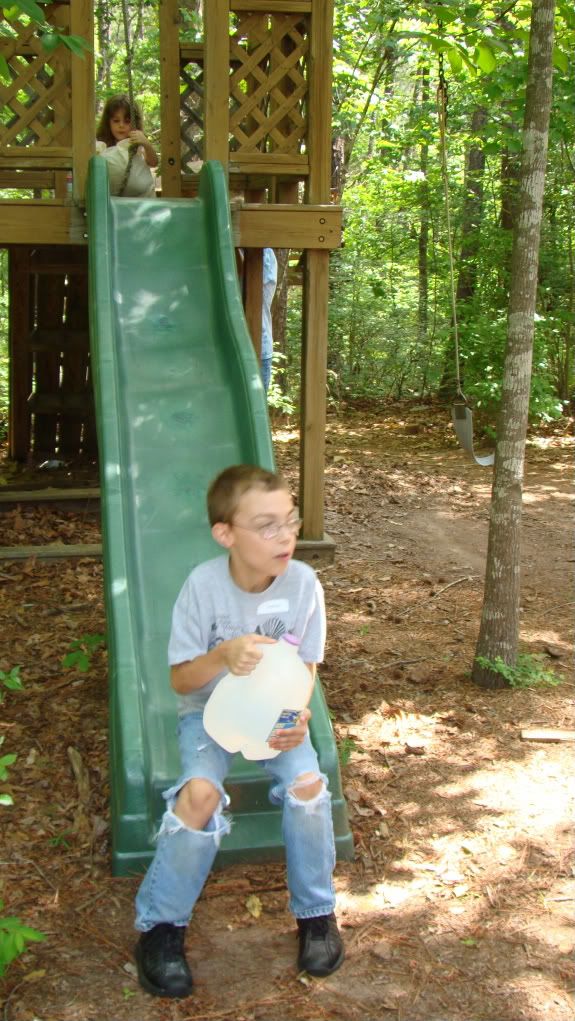
We marked the colony in the yard using cones and plastic tape. Inside the colony were scattered limbs, twigs and branches. Once the ants reached the colony, they had several things to do.
1. Remove the "trash" (limbs) from the colony to a designated spot.
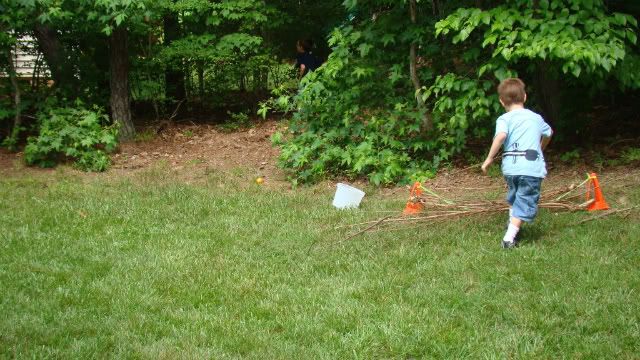
2. Bring leaves to feed to the queen.
3. Remove ladybug eggs. (Ladybugs eat aphids. Ants get "honeydew" from aphids. Ants remove ladybug eggs from leaves so that they won't be there to eat the aphids. Amazing, huh?)
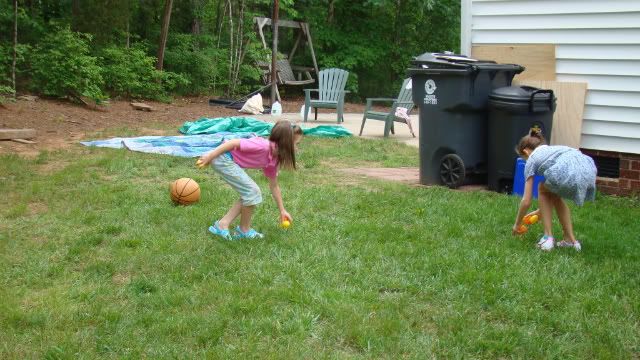
The challenge was that once they left the safety of the colony, they had to watch out for predators - birds, toads and lizards. Several of the children were predators and would just tag the ants to freeze them. We allowed them to be unfrozen by being tagged by another ant.
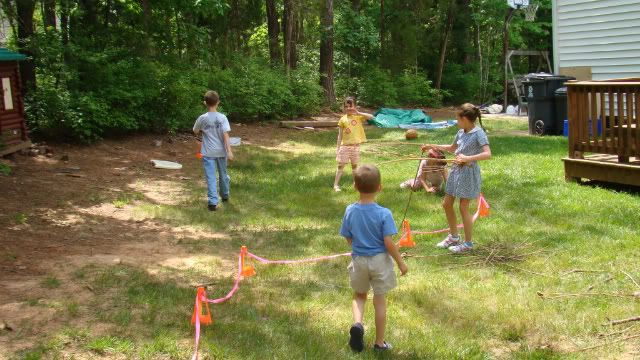

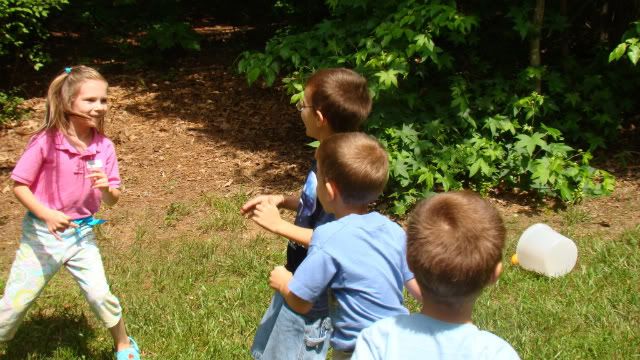
The goal was to complete the tasks before all the ants were frozen. It was a fun game and hopefully helped them to remember a little more about the ant.
Some of our final activities included learning about different types of ants (African driver ant which marches over anything in it's path, leaf-cutter ant and weaver ant). We also did another experiment using the sense of smell - ours this time. I put 3 different foods inside paper bags. The children were asked to smell (and not peek) to see if they could identify the foods. I used peanut butter which almost all the children identified, cheese (maybe half got this one if we included variations like goldfish and cheese nips) and an apple slice (this was the hardest one). We did have a couple of children that got all 3 of them correct.
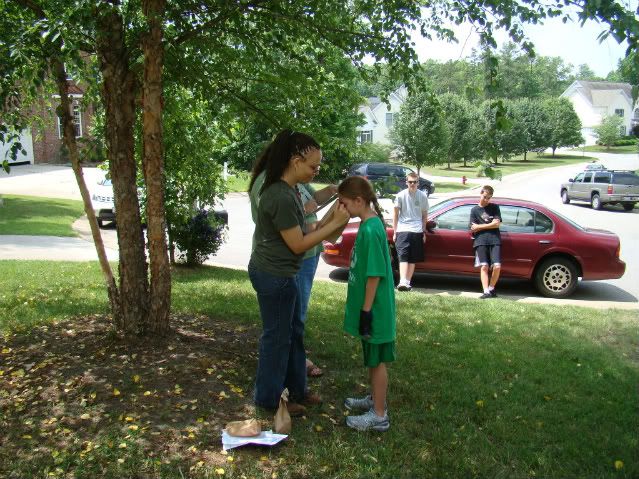
Lastly we looked at our food experiment - the cafe in the woods. We found that there were ants on both plates - different kinds of ants. The larger ants had gone for the salty plate and were enjoying the bread and cracker especially. There were some smaller ants on the sweet plate - but not too much was eaten yet. We were surprised by this! I thought the sweet would really go faster.
Later in the afternoon, Rebecca checked on the plates again. This time she found that the sweet plate had definitely been a hit. The apple, applesauce and peanut butter were gone. The cracker was mostly gone and so was the bread.
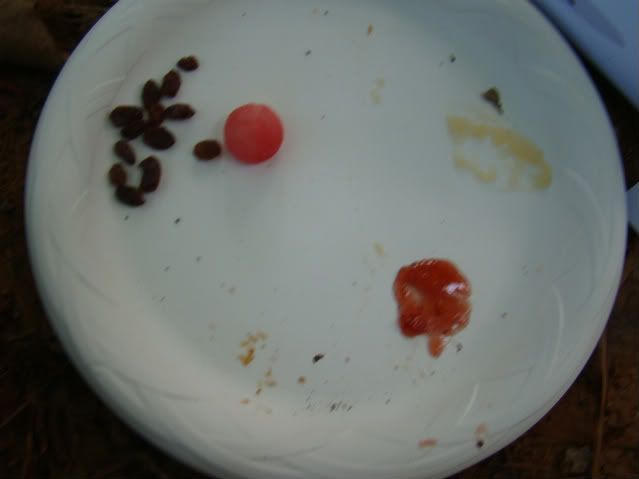
Our first day went well. We have 3 more days of camp next week. One of the things that I love about doing this is that I learn a lot about a new subject too. These picture books are wonderful! Great facts packaged in a clever story. I highly recommend them!
I'm happy to share more about how to host your own co-op camp if anyone has questions.
Blessings
Leslie



